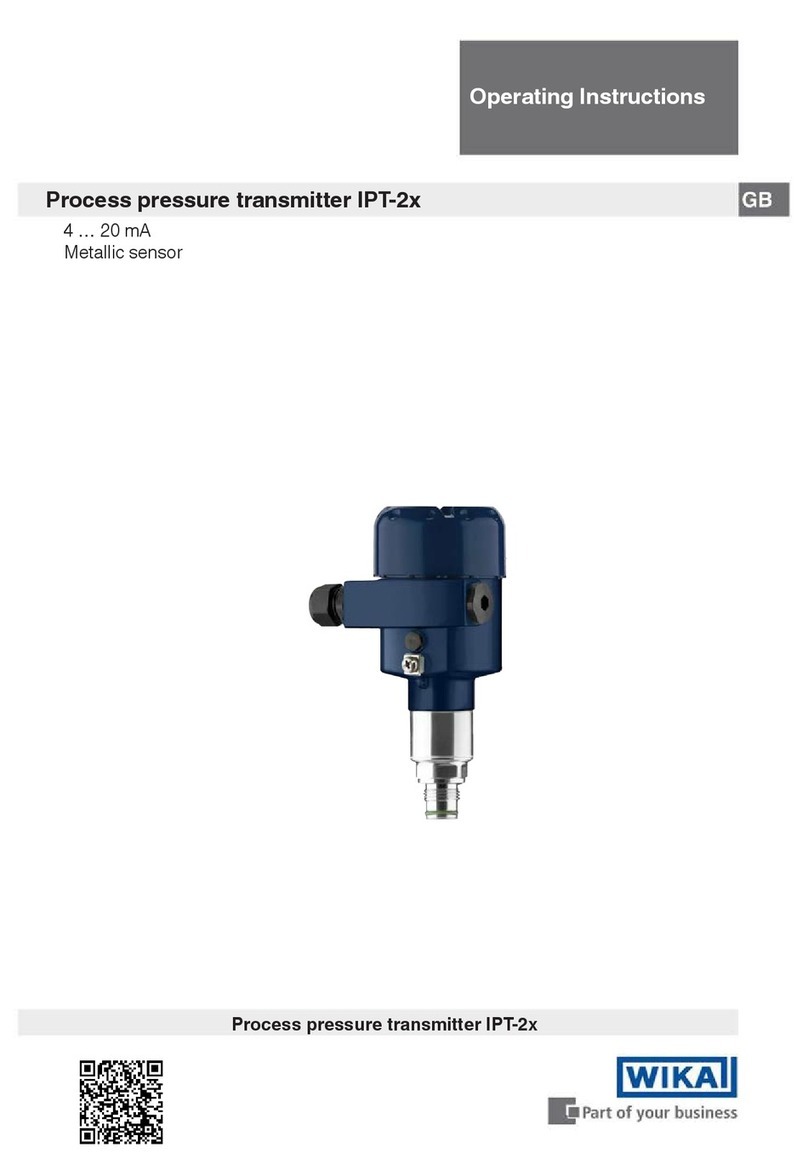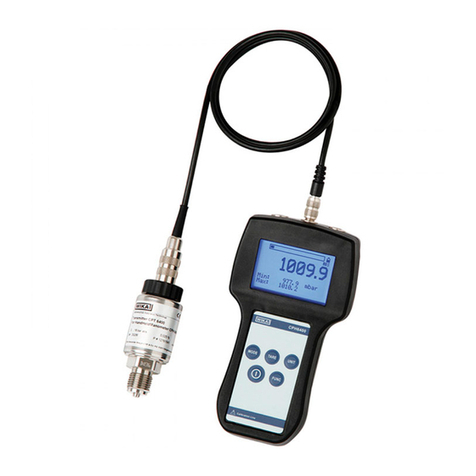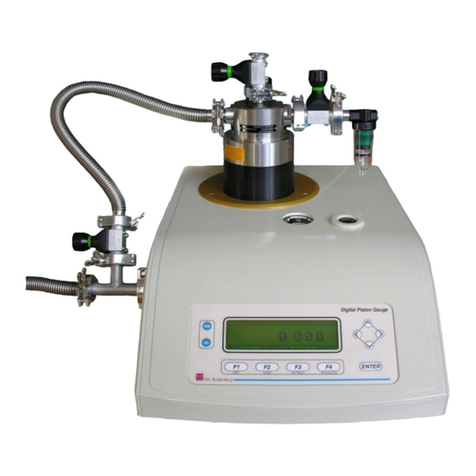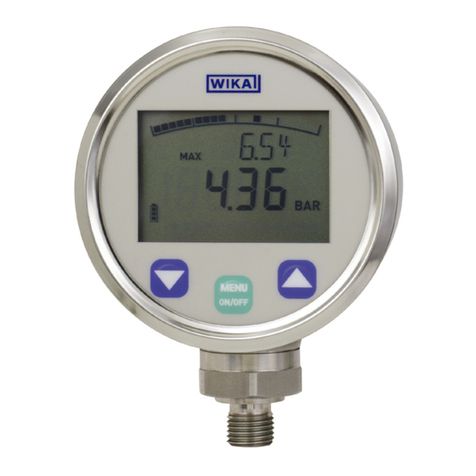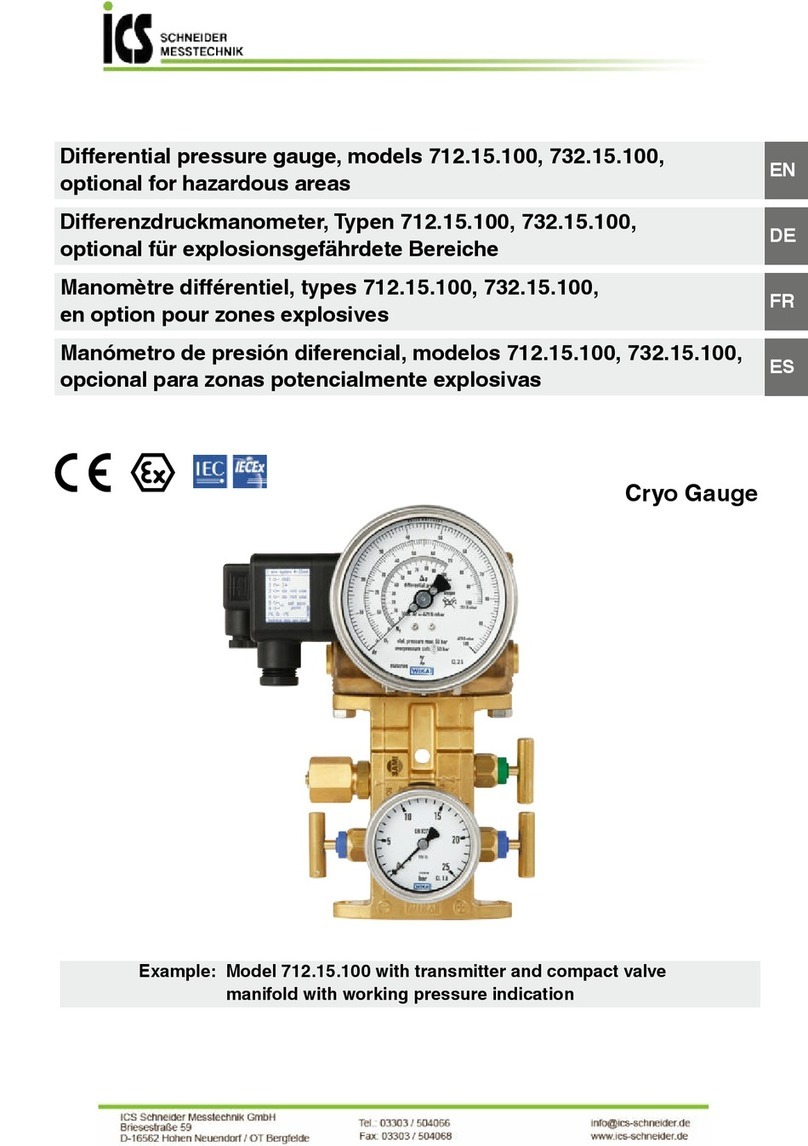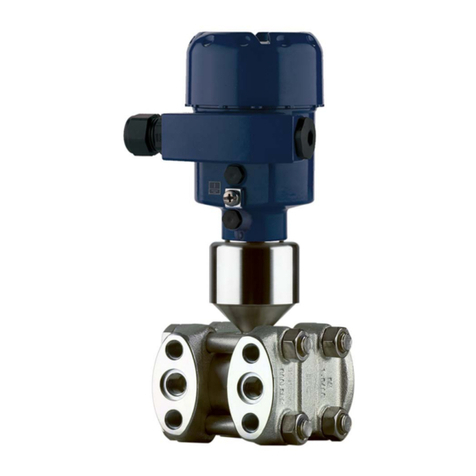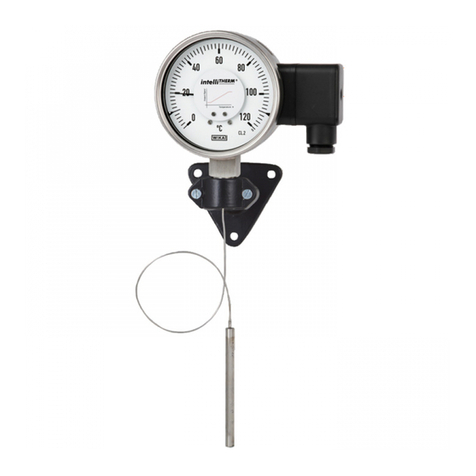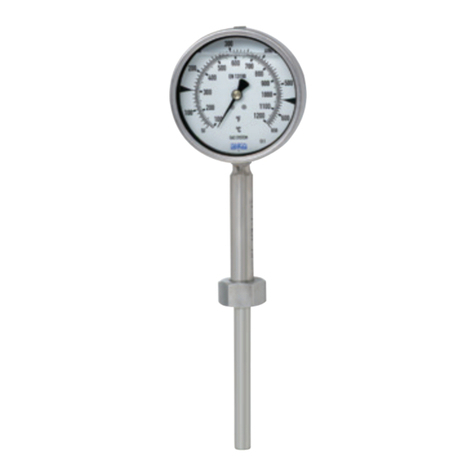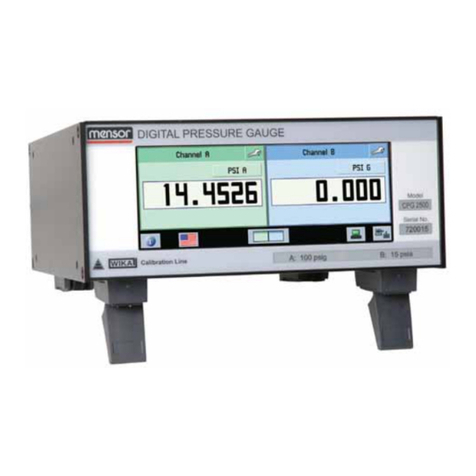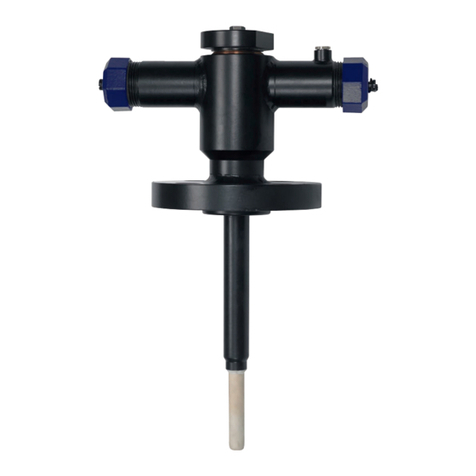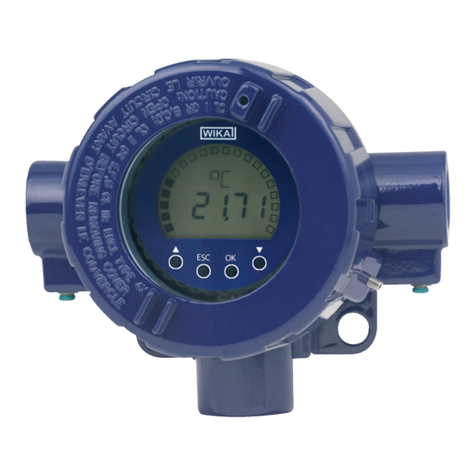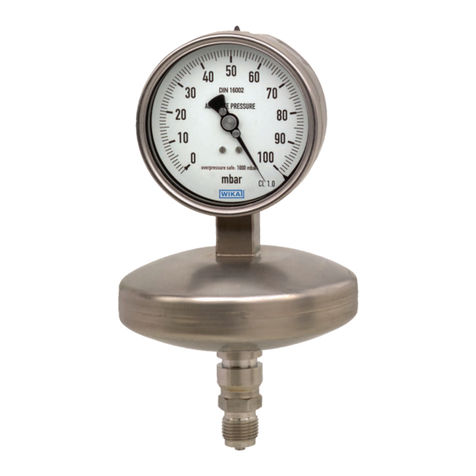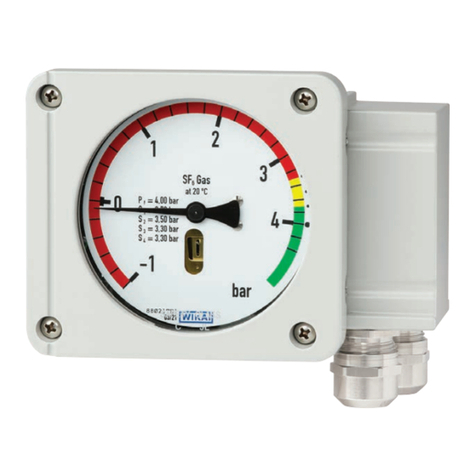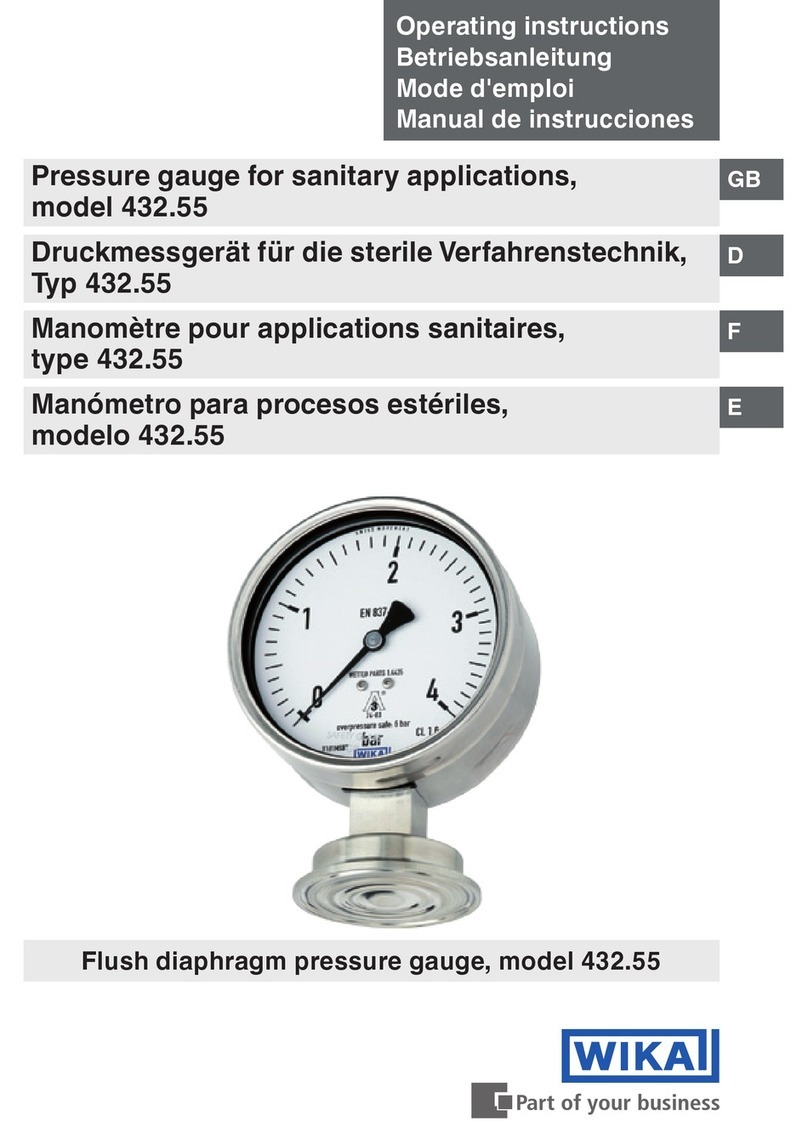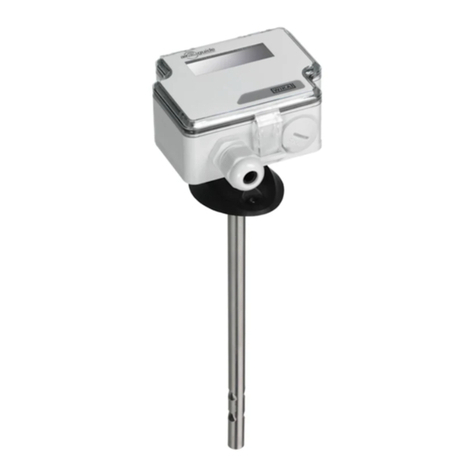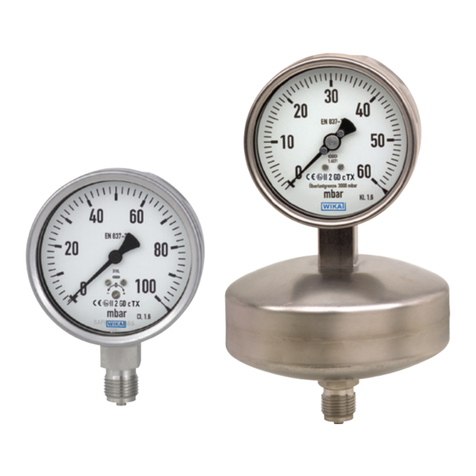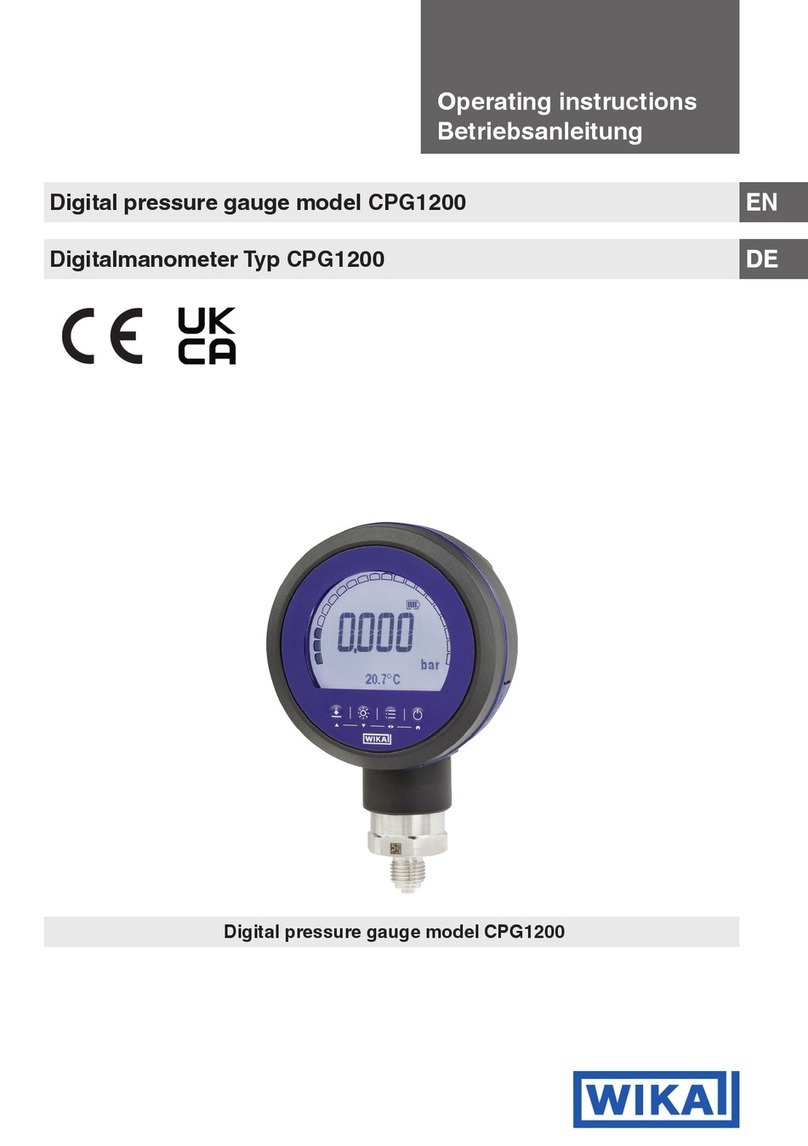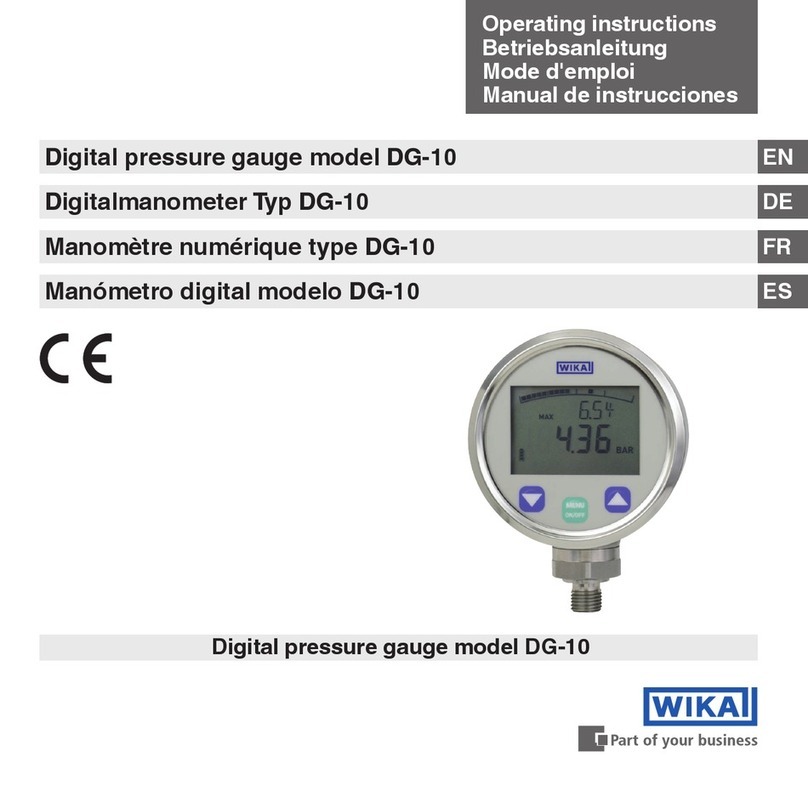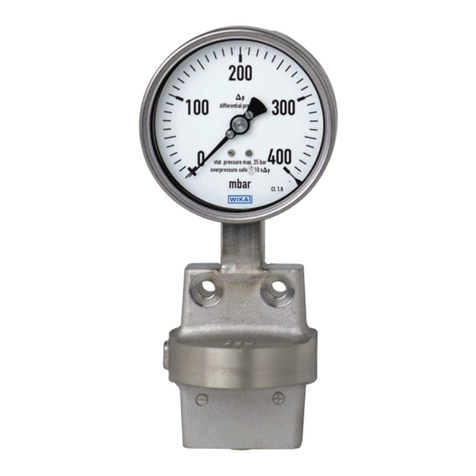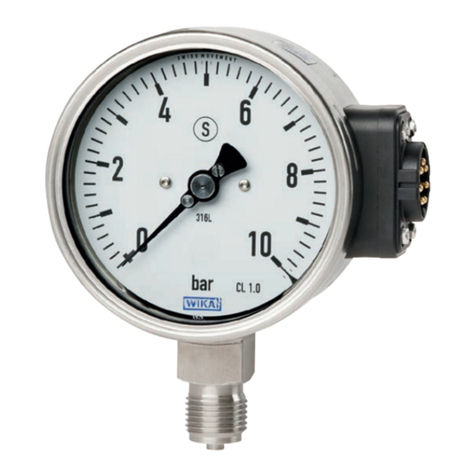5. Valve manifold with working pressure gauge (optional)
The compact optional anged valve manifold for an NG 100 working pressure gauge allows
the central measurement of level and working pressure in a single device.
To isolate line pressures without inter-
rupting the process, enabling gauge
removal/examination and protecting the
gauge against overpressure of n-times
rated pressure which may occur during
plant pressure testing.
To protect the gauge against pressure
surges/pressure spikes, and thus against
unspecied operating conditions
For gauge shut-downs, if no measure-
ments are required for long operating
periods, i.e. if only occasional measure-
ments are necessary (to increase service
life of those dierential and working pressu-
re gauges with a high frequency of pressure
uctuations).
Recalibration of dierential pressure
gauges (tank volume display)
a) Close the plus and minus shut-o valve
b) Afterwards open the pressure equalising
valve, wait for a short period of time and then
close the pressure equalising valve again.
c) Connect the pressure standard and test pump using the additional G ¼ female port in the
plus chamber of the measuring system
d) Remove the test connection screw from the minus side valve manifold
e) The plus side can then be pressurised
f) After adjustment:
- Close the air bleed screw
- Disconnect the pressure standard and test pump and close the connection
- Slowly open rst the plus and then the minus shut-o valve
Test connection M20 x 1.5 for checking the working pressure gauge
The pressure equalising valve allows a zero point control during operation (with open valve).
a) Close the plus and minus shut-o valve
b) Afterwards open the pressure equalising valve
While the media is owing from the higher pressure side to the other side, the dierential
pressure at the pressure gauge drops to zero (the dierential pressure display must be at
zero, i.e. within the zero tolerance range which shows that the gauge is
working correctly).
A zero adjustment can be made using the standard integra-
ted, adjustable pointer (remove snap t bezel incl. window and
sealing ring beforehand).Twisting the slotted screw on the
adjustable pointer you can adjust the zero point.
After completing the zero adjustment, the snap t bezel,
incl. window and ‚o‘-ring seal, must be correctly re-tted
and the pressure equalising valve must then be closed again.
Subsequently the zero point of versions with integrated
transmitter (see page 9) should be checked.
c) Close the pressure equalising valve
d) Slowly open rst the plus and then the minus shut-o valve


